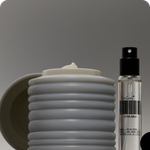What is the best pH for healthy skin?
The skin’s average pH—a measure of acidity/basicness—ranges from 4.5 to 5.5.¹ The skin’s “acid mantle” helps protect it from pollution, bacteria, and other intruders. The acidity of the skin also contributes to the health and functioning of the whole skin system, including the skin’s ability to produce sebum and self-moisturize (everything is connected).
“The skin works best with light acidity,” notes dermatologist, Dr. Hope Mitchell. As the number goes down, the skin becomes more acidic, which happens as we get older. “If the pH is lower than 4.5 to 5.5, that’s when we might start to see signs and symptoms of dry skin, like itching or flaking or peeling. And if we went down to 2.5 or 3.0, it peels.” This is what a chemical peel does, which allows for new, smooth skin to form. Without making you do any math, the simplest way to find products that address the skin’s pH is to look for “pH-balancing” or “pH-neutralizing” on the package.
References:
¹Natural skin surface pH is on average below 5, which is beneficial for its resident flora by H Lambers, S Piessens, A Bloem, H Pronk, and P Finkel. National Library of Medicine.
Get Updates
There’s more to come.
Sign up to receive periodical updates on Mass Index, and to be the first to know when Soft Services launches new products. (If we don’t have any updates, we won’t email you.)
Dry Skin
Skin that's losing more moisture than it's able to maintain.
Also Called
Dehydrated skin, xerosis
Frequently Found On
Arms, legs, feet, hands
Related Concerns
Learn More: Dry Skin

























